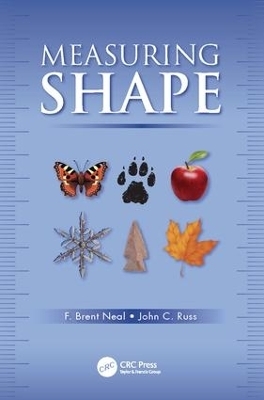
Measuring Shape
CRC Press (Verlag)
978-1-138-07219-0 (ISBN)
—Tom Malzbender, Hewlett-Packard Laboratories, Palo Alto, California, USA
Useful for those working in fields including industrial quality control, research, and security applications, Measuring Shape is a handbook for the practical application of shape measurement. Covering a wide range of shape measurements likely to be encountered in the literature and in software packages, this book presents an intentionally diverse set of examples that illustrate and enable readers to compare methods used for measurement and quantitative description of 2D and 3D shapes. It stands apart through its focus on examples and applications, which help readers quickly grasp the usefulness of presented techniques without having to approach them through the underlying mathematics.
An elusive concept, shape is a principal governing factor in determining the behavior of objects and structures. Essential to recognizing and classifying objects, it is the central link in manmade and natural processes. Shape dictates everything from the stiffness of a construction beam, to the ability of a leaf to catch water, to the marketing and packaging of consumer products. This book emphasizes techniques that are quantitative and produce a meaningful yet compact set of numerical values that can be used for statistical analysis, comparison, correlation, classification, and identification.
Written by two renowned authors from both industry and academia, this resource explains why users should select a particular method, rather than simply discussing how to use it. Showcasing each process in a clear, accessible, and well-organized way, they explore why a particular one might be appropriate in a given situation, yet a poor choice in another. Providing extensive examples, plus full mathematical descriptions of the various measurements involved, they detail the advantages and limitations of each method and explain the ways they can be implemented to discover important correlations between shape and object history or behavior. This uncommon assembly of information also includes sets of data on real-world objects that are used to compare the performance and utility of the various presented approaches.
Brent Neal is a scientist and industrial researcher with Milliken & Company, where he currently leads the central materials characterization and analytical chemistry facility. In this role, he leads efforts in technology and product development through deep understanding of materials performance. He has three patents issued or pending based on his work in polymer-matrix composites. Prior to his tenure at Milliken & Company, he consulted and developed bespoke software for quantitative image analysis. He received his Ph.D. in solid state physics from Louisiana State University in 2002. Over the course of his career, he has measured and analyzed images from many different fields and his experience in materials characterization and measurement has been applied everywhere from the lab bench to manufacturing plants. In his 50-year career as scientist and educator, John Russ has used image processing and analysis as a principal tool for understanding and characterizing the structure and function of materials. Much of Russ' research work has been concerned with the microstructure and surface topography of metals and ceramics. He has received funding for his research from government agencies and from industry. Teaching the principles and methods involved to several thousand students—in addition to consulting for many industrial clients—has further broadened Dr. Russ’ experience and the scope of applications for image processing and analysis. He continues to write and consult for a variety of companies (and to provide expert testimony in criminal and civil cases). He also still teaches image processing and analysis workshops worldwide and reviews publications and funding proposals.
The Meaning(s) of Shape. The Role(s) of Computers. Two-Dimensional Measurements (Part 1). Two-Dimensional Measurements (Part 2). Three-Dimensional Shapes. Classification, Comparison, and Correlation.
| Erscheinungsdatum | 22.04.2017 |
|---|---|
| Zusatzinfo | 29 Tables, black and white; 376 Illustrations, black and white |
| Verlagsort | London |
| Sprache | englisch |
| Maße | 156 x 234 mm |
| Gewicht | 453 g |
| Themenwelt | Informatik ► Grafik / Design ► Digitale Bildverarbeitung |
| Mathematik / Informatik ► Informatik ► Theorie / Studium | |
| Technik ► Elektrotechnik / Energietechnik | |
| Technik ► Umwelttechnik / Biotechnologie | |
| ISBN-10 | 1-138-07219-2 / 1138072192 |
| ISBN-13 | 978-1-138-07219-0 / 9781138072190 |
| Zustand | Neuware |
| Haben Sie eine Frage zum Produkt? |
aus dem Bereich


